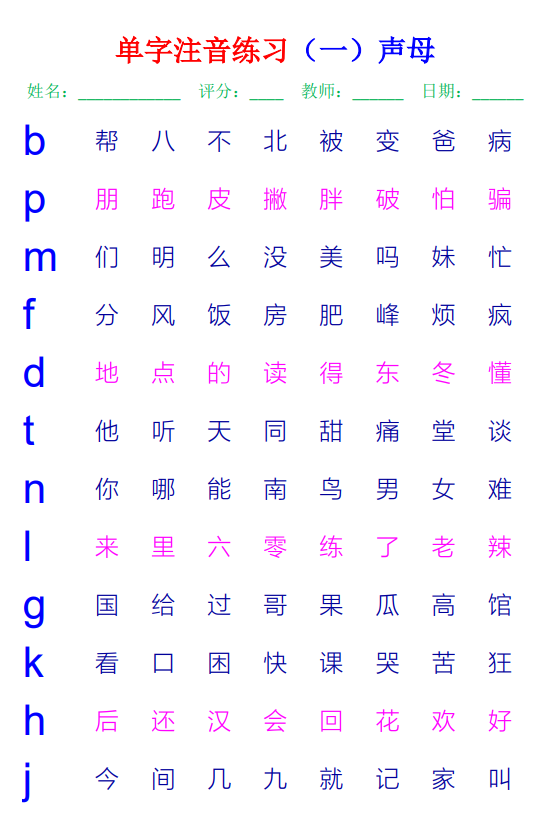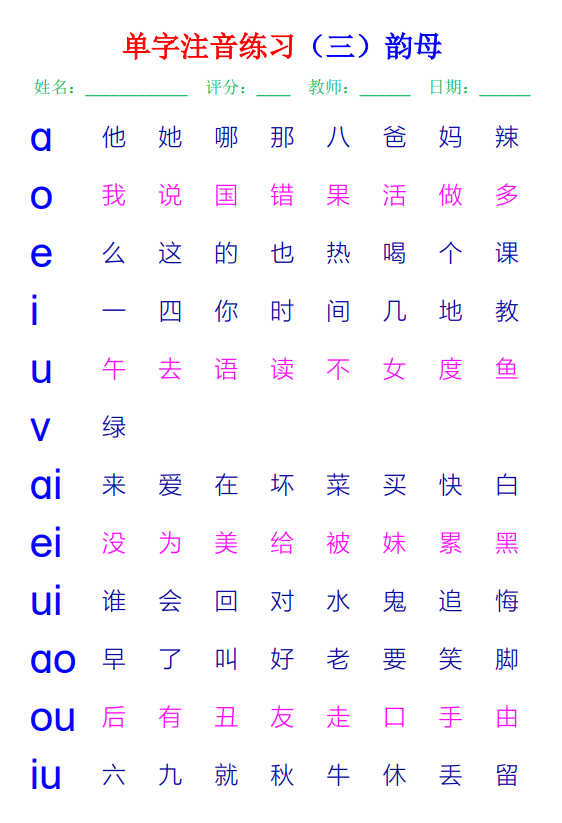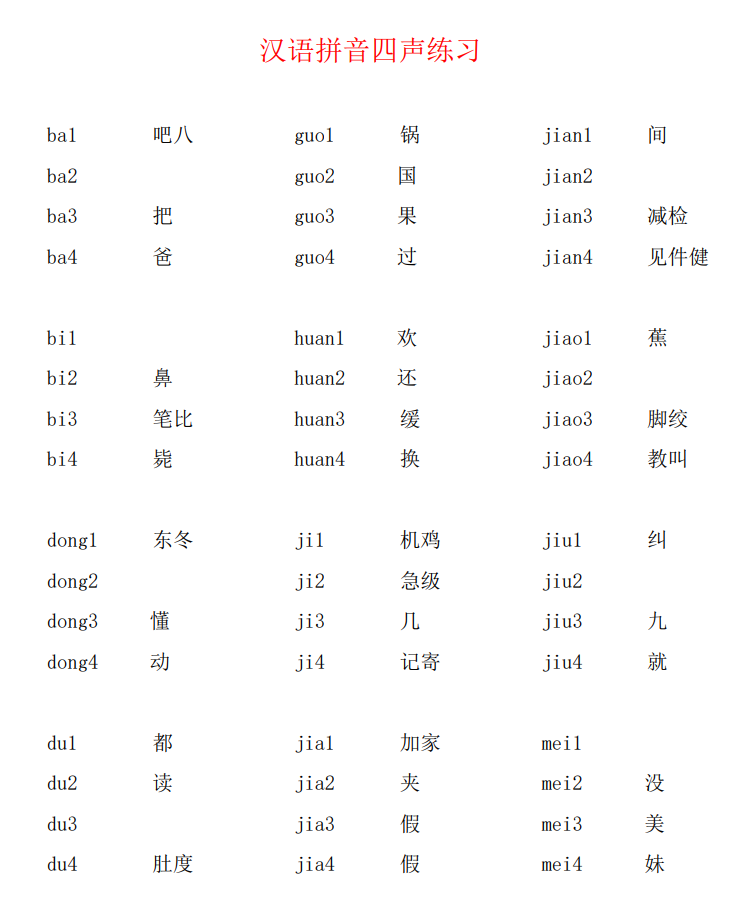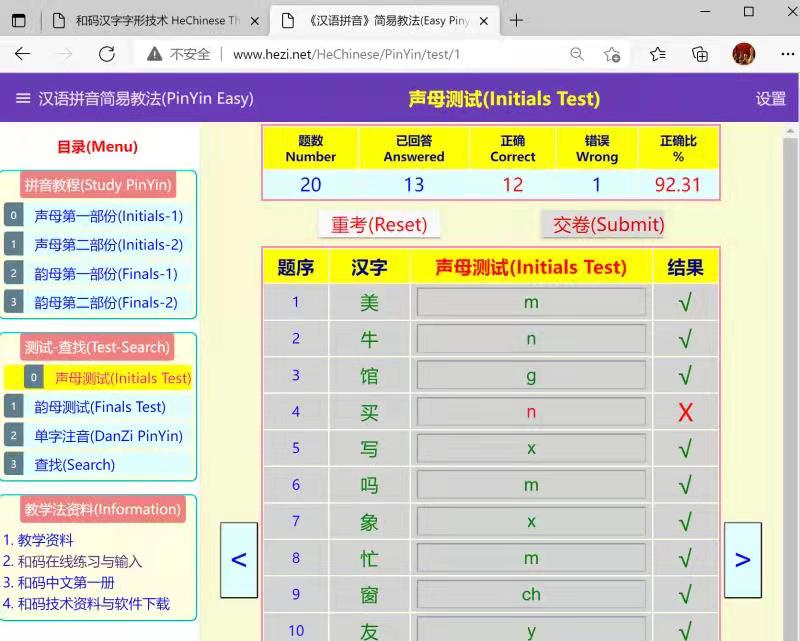
PinYin is a Chinese word-sound annotation system, it was formally issued at 1958, it uses Latin letters to gives each Chinese word a standard phonetic notation. PinYin is a language tool, not a Chinese language replacement.
Since 1958, starting from PinYin to learn Chinese as a study method, quickly replaced classical study method, has been used worldwide, but the result is disappointed.
PinYin system annotate each word-sound with a format: initial + final + tone, PinYin study includes 4 parts.
1. 23 initials
b:玻;p:坡;m:摸;f:佛:d:得;t:特;n:讷;l:勒;
g:哥;k:科;h:喝;j:基;q:欺;x:希;
z:资;c:雌;s:思;r:日;zh:知;ch:嗤;sh:诗;y:医;w:巫;
2. 24 finales
a:阿;o:哦;e:鹅;i:衣;u:乌;ü:迂;
ai:哀;ei:A;ui:威;ao:奥;ou:欧;iu:悠;ie:耶;üe:约;er:儿;
an:安;en:恩;in:因;un:温;ün:晕;
ang:昂;eng:鞥;ing:英;ong:轰的韵母
3. 4 tones

4. Spelling method
Step1: initial + final to get a sound;
Step2: tone to modify the step1 spelled sound.
中:zhōng = zh + ong + 1st tone
国:guó = g + uo + 2nd tone
A tone is an index of standard 4-tone sequence. Learner needs to know the PinYin standard 4-tone sequences, then can learn PinYin tones well.
There are two ways to learn Chinese pronunciation, we need to find which one is practicable.
1. PinYin first, through PinYin to learn Chinese words pronunciation, as Pinyin Chinese study method does.
2. Chinese pronunciation directly first, then learn PinYin, as all native Chinese kids do.
Using Chinese to annotate English is a wrong way to learn English because the learner's attention is on the Chinese.
1. Good morning (古的猫宁)
2. Good afternoon(古的阿夫特怒)
3. Can I help you?(坎挨海朴油)
Good→古的→sound, the ‘古的’ annotation provides an indirect way to pronounce sound of ‘Good’. This is no right, learners should not learn '古的'.
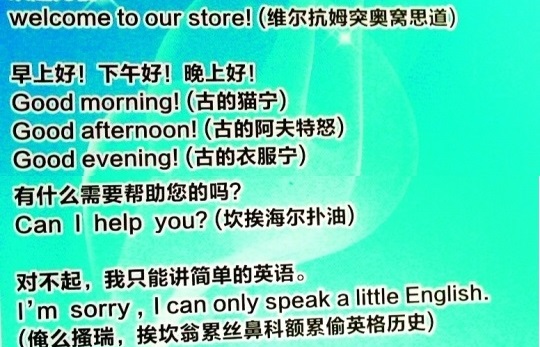
It is equally same wrong to use English to annotate Chinese for learning pronunciation, because the learner's attention is on the PinYin.
1. 早上好(zǎo shàng hǎo)
2. 下午好(xià wǔ hǎo)
3. 我来帮你,好吗?(wǒ lái bāng nǐ, hǎo má)
好→hǎo→sound, the ‘hǎo’ provides an indirect way to pronounce sound of ‘好’. Students learned lots of PinYin, it is not helpful, but has a negative impact on pronunciation and reading.
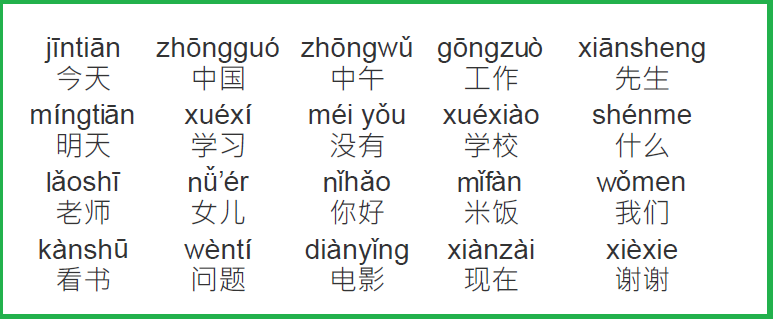
Chinese PinYin uses English letters, so foreigners read PinYin with English sounds and tones, and it is difficult to change.
PinYin study requires to remember each word’s tone. A tone is an index of PinYin standard 4-tone sequence, if learners can’t pronounce the standard 4-tone sequence, they can’t tell/read the index (tone).
So, start from PinYin to learn Chinese pronunciation is a difficult way, actually it is a wrong way, it causes Chinese pronunciation much harder to learn.
1. Language pronunciation does not rely on PinYin
The Chinese language has many dialects, Guangdong, SiChuan, CaoZhou, Mandarin, YangZhou, and hundreds more, Many dialects do not have PinYin, but it does not affect people learning local dialects.
So, language pronunciation does not rely on PinYin, Mandarin is same.
2. Knowing a word’s PinYin, does not mean you can pronounce it accurately.
Pronunciation is a language skill, this skill is different from language knowledge as PinYin, having a Chinese dictionary(knowledge), don’t mean you get the Chinese skills.
3. Native Chinese never use PinYin to learn Chinese pronunciation.
Infants learn Chinese pronunciation directly from parents, PinYin never involved.
Chinese kids learn PinYin at primary school, at that time, they speak Chinese fluently, they use Chinese sound to learn PinYin easily, not the opposite way.
Foreign learners should do the same as Chinese kids, by learning Chinese speaking directly first, and then learning PinYin and tones afterwards.
In HeChinese, we learn PinYin after finish HeBook1, after learning 300 words pronunciation, then use these 300 words’ sounds to learn PinYin and practice 4-tone sequences.
We use web application to do the practice:
www.HeChinese.net/PinYin/

